Snapper Fish, More Than a Dish
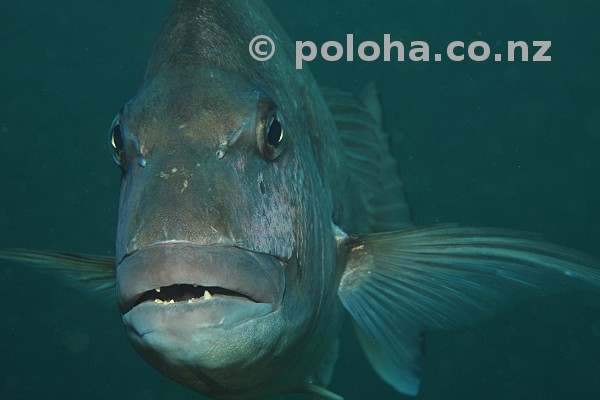
When I prepare my gear before a dive people often ask me if there is “something” underwater there on the spot. Sometimes I pretend I don’t understand and ask what they mean. They usually mean “something to eat”, a “big fish” or “snapper” (that’s a favourite one) … something suitable for dinner.
I cannot see just food when I meet snapper underwater. Though they are usually shy, keep distance, especially in the areas where we hunt them a lot, they can be pretty inquisitive in marine reserves where the threat is (usually) not present.
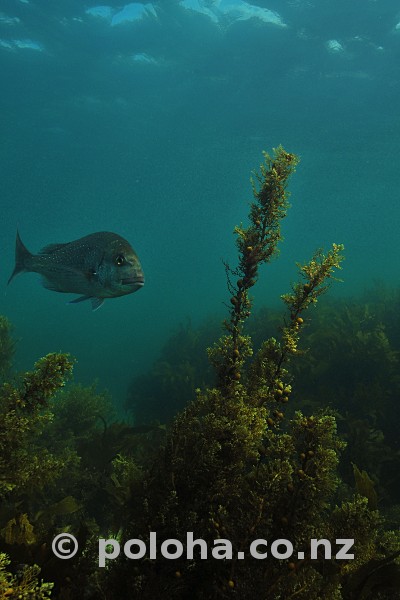
It happened to me several times in Goat Island Marine Reserve a big snapper joined me at the beginning of my dive and stayed with me to its end. Sometimes it disappeared from my sight, I thought it got bored and left, but then I realized it was waiting behind a kelp covered rock. The fish was well aware of my position all the time. It was me who didn’t know … with my very limited senses not suitable to guide me through the undersea world.
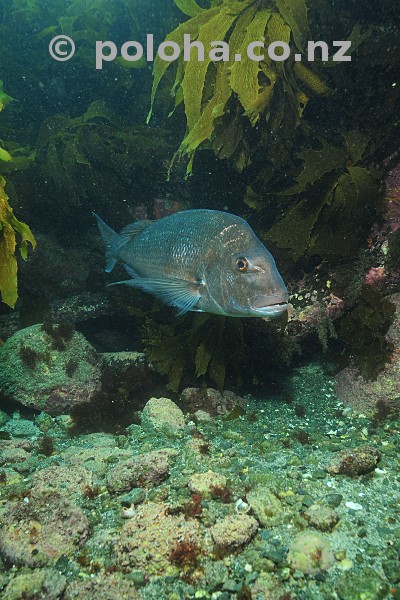
I am not sure if fish can be jealous, if they can have an emotion of that kind. Anyway, I am sure snapper behave sometimes as if they can. I remember one individual, it didn’t like to get photographed, it turned away from me every time I tried to make a picture. It seemed it didn’t like even more when I tried to photograph other fish. It either chased them away (mostly kelpfish) or tried to get in between my camera and them. That was happening when I was photographing other snapper. It was also very smart, it could recognize when I changed the composition to get it into the picture and it flew away.
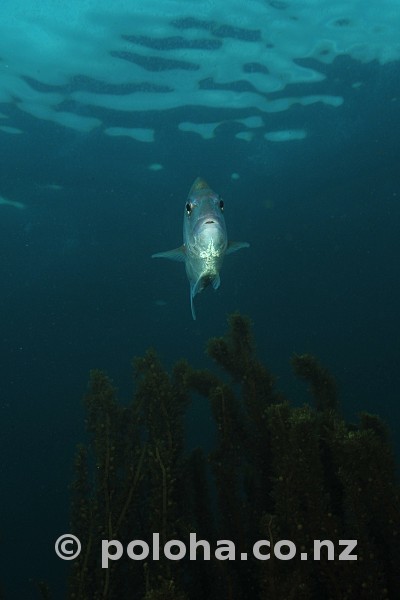
There are occasions a fish behaves in a different manner than usually. That’s true about snapper as well. Restless most of the time they can be a very patient photo model on a good day. Just imagine. Such a guy can withstand that scary big eye of the camera, a blast from the strobes, it can wait for the picture check, a controls adjustment, strobes recharging and re-composition only to be able to be exposed to another light blast. Yet on a good day the fish does it willingly many times.
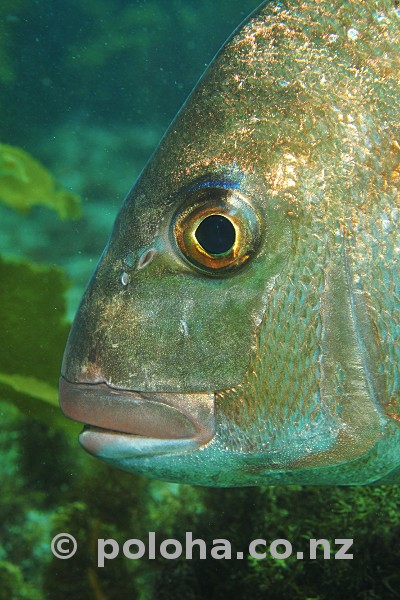
Whether in a marine reserve or not, hunted or not, snapper die. It happened recently to one of the popular big snapper in the Goat Island Marine Reserve, the one called “Scarface”. I have found its twisted corpse on the flat bottom among kelp fronds. It was a sad view, however, though the corpse will disintegrate and become a part of the circle of life in a very short time, our memories will last.
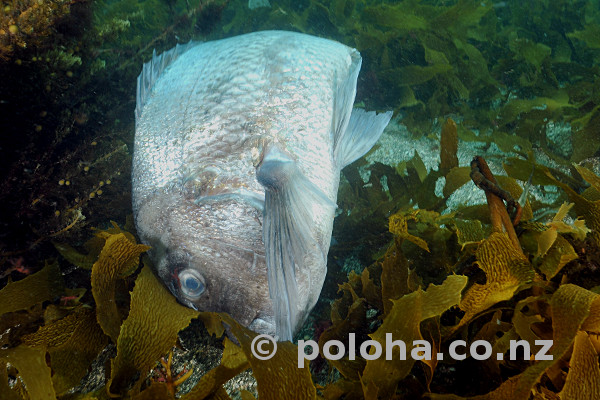
Keywords: “Australasian snapper” Australasian snapper “silver seabream” silver seabream fish “Pagrus auratus” Pagrus auratus Pacific coastal habitat “kelp forest” underwater undersea dead corpse kelp forest